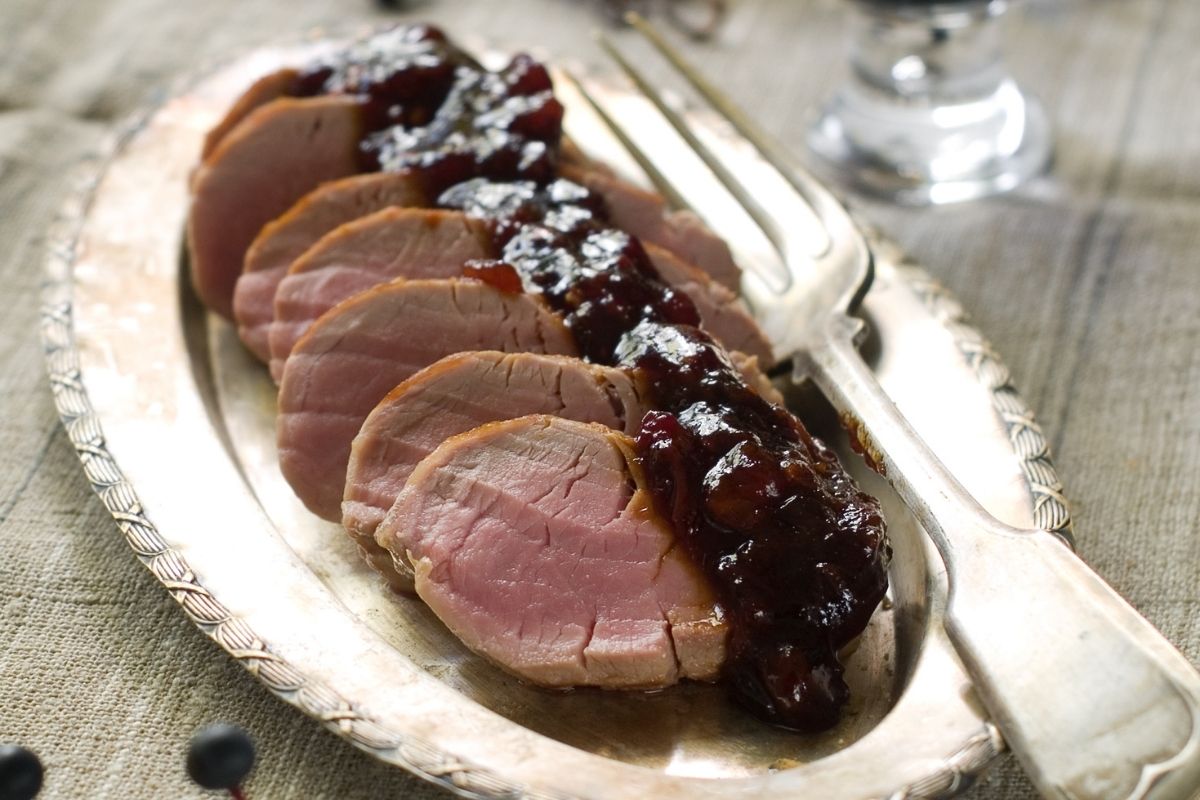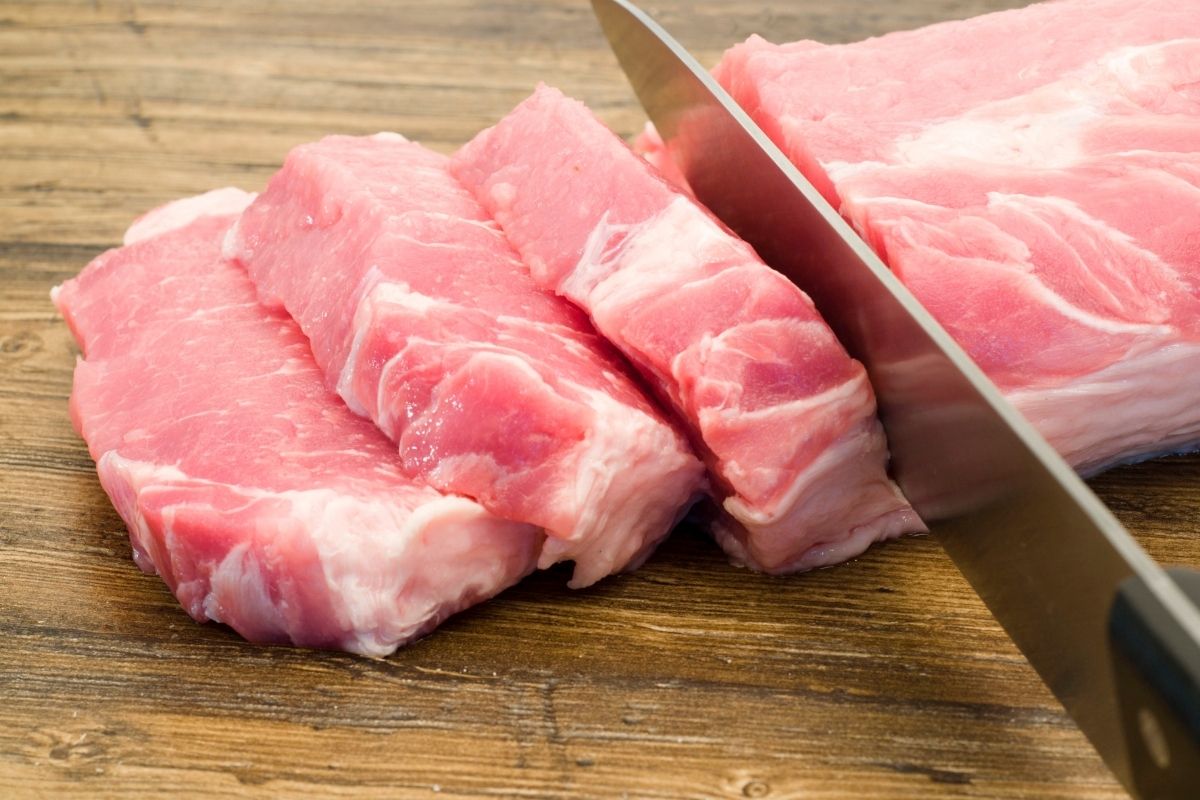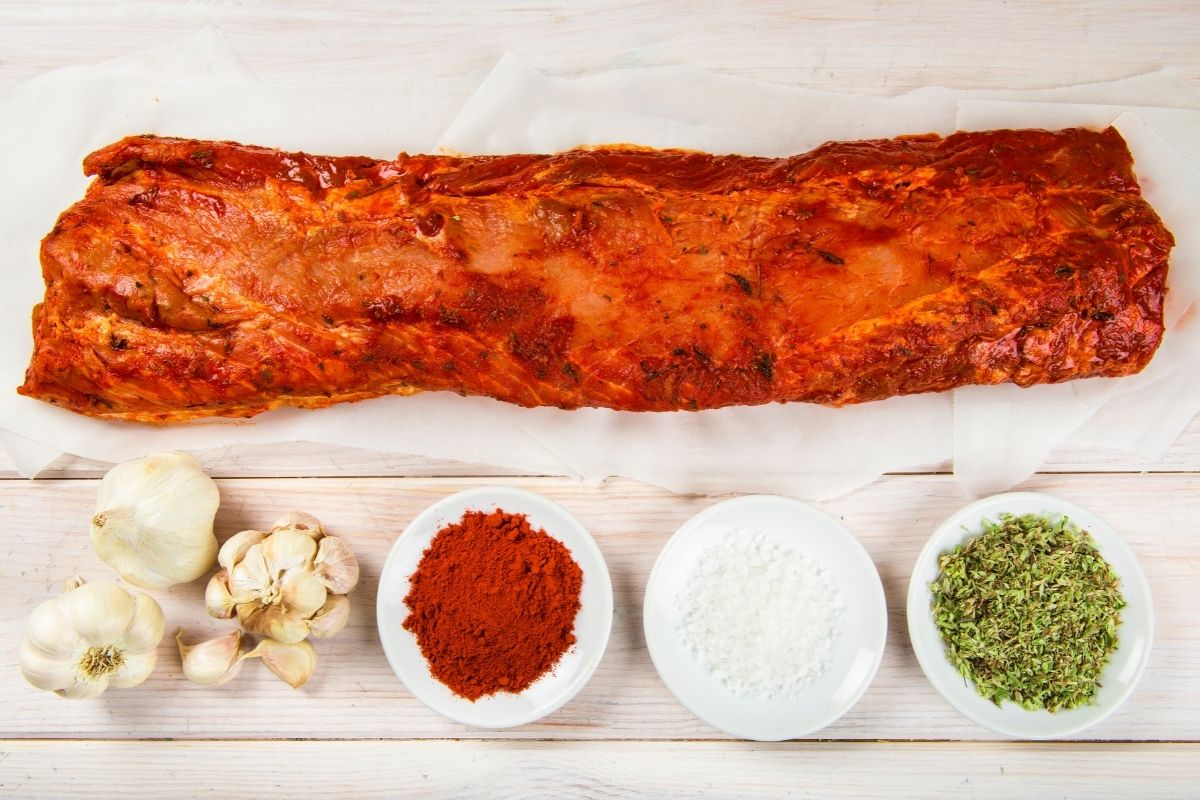Pork tenderloins are delicious, but they can also be tricky to cook. If you overcook them, the meat can become dry and tough. If you undercook them, they remain juicy and moist.
Pork tenderloins come from the loin section of the pig. They are lean and very versatile. They can be grilled or roasted, broiled or sautéed. The cut is often served in thin slices and topped with various sauces and condiments.

Of course, some people prefer their meat to be medium-rare or pink in the middle. Something that’s not always possible with certain kinds of meat. But can pork tenderloin be pink in the middle after cooking?
In the following article, we will take a look at pork tenderloin and how it should be cooked. While also explaining whether the meat can remain pink in the middle.
So if you want to cook the perfect pork tenderloin, this article has everything you need to get started.
Should Pork Tenderloin Be Pink?
The short and simple answer is yes – pork tenderloin can remain pink in the middle, as this does not mean that the cut is unsafe. It simply means that the meat is perfectly cooked.
When cooking pork, the inside of the meat should have a temperature of 145 degrees F, which can sometimes result in a pinkish center.
In some cases, even well-done pork can retain its pinkish hue, which means the meat is still safe to eat even when it is pink.
What Is Pork Tenderloin?
Pork tenderloin is one of the most popular cuts of pork. It comes from the loin area of the pig. This cut of meat is usually sold whole, so it must be trimmed before cooking.
This cut of meat is extremely lean and contains less than 10% fat by weight. It is usually about 1 inch thick and weighs anywhere between 4 ounces and 8 ounces.
It is best to buy pork tenderloin from a reputable butcher who knows what they’re doing. You don’t want to end up with a piece of meat that’s too big or too small.
Because of its lean cut, pork tenderloin does not taste like other cuts of pork. The meat is also easy to marinade and can absorb sauces and seasonings.
What Temperature Is Safe To Eat?
There was once a time when pink pork was considered dangerous to eat, as it was recommended to cook the meat until it achieved an internal temperature of around 160 degrees F.
When cooked at this temperature, the pork would take on a grayish hue, which resulted in many people believing that pink pork was undercooked and unsuitable for consumption.
However, there was no scientific evidence to support the claim that eating pink pork was unhealthy. In fact, it was later proven that the meat could still be eaten while pink in the middle.
Of course, these concerns were not to be dismissed, as undercooked pork can contain a nasty parasite called trichinosis.
Trichinosis is caused by a kind of worm that lives in the intestine of the pig. When the meat is cooked at high temperatures, the parasite dies off. However, if the meat is left uncooked, the parasite can survive and thrive inside your body, which can result in severe illness.
Consuming undercooked pork can also result in the contraction of ecoli bacteria, which is another reason why it should be cooked to an internal temperature of 145 degrees. When cooked in these conditions, the meat can appear pink in the middle.
However, it is still safe for human consumption.
If you don’t want to eat pink pork, then you can cook the cut for longer or until it turns gray. However, you will need to take it off the heat once it reaches a temperature of 150 degrees.
What Is The Significance Of Pink Meat?

If you love steak, then you probably know that you can discern the status of the meat by looking at the color inside. For example, if the meat is red in the middle, then this probably means it is rare.
Pink is often a sign of medium meat, while light brown is accepted as well done.
However, this method does not work with pork for numerous reasons. For starters, pork’s pH factor is high and can remain pink after it has been cooked in extreme heat. In fact, the pinkness of the meat can become even more evident once you have cut the pork into pieces.
Even packaged pork comes with the risk of color reversion, which refers to a natural phenomenon where the meat turns red even after it has been cooked and packaged. Because of this, you can never use the color of pork to discern whether it is done and safe to eat.
How To Grill Pork Tenderloin
When choosing pork tenderloin, we recommend looking for meat that has a shiny appearance. This indicates that the meat has been properly trimmed and seasoned before cooking. If the meat appears dull or dry, then it may not have been treated correctly.
In most cases, the pork will appear dark pink. However, it is also possible to use a lighter meat if nothing else is available.
Once you have purchased the meat, you will need to wipe it down using a paper towel, as this will help to remove any excess moisture. You will also need to trim away any fat from around the edges. Finally, season the meat with salt and pepper.
Pork is known for its mild flavor, which means you should season the tenderloin with other condiments before putting it on the grill. For the best results, we recommend using a combination of brown sugar, garlic, cumin, paprika and onion powder.
When the pork has been seasoned, it will need to lay at room temperature for 30 – 40 minutes, as this will allow the rub to be absorbed into the meat. While the meat rests, you should preheat the grill to around 400 degrees F, using either gas or charcoal.
Place the tenderloin on the grill and cook it for around 20 minutes. While making sure to rotate the meat every few minutes to ensure an even finish.
What About Marinades?
If you do not wish to use a rub, then you might want to think about using a liquid marinade to season the pork. To help you out, we have gathered some of our favorite marinades for inspiration:
Mexican Carnitas
This delicious marinade features a zesty combination of lime juice, olive oil, fresh cilantro, ground cumin, chili powder, oregano, garlic powder, and salt.
Teriyaki
This Asian-inspired marinade is bursting with flavor and features a delicious blend of tamari, pineapple juice, canola oil and sherry. Just whisk the ingredients together with garlic and ginger, and you will have a tasty marinade in minutes.
Maple Dijon
If you prefer your pork sweet and aromatic, then you will love this maple Dijon marinade. All you have to do is combine Dijon mustard with maple syrup, red wine vinegar, olive oil and fresh rosemary – delicious!
Lemon Herb
For a tangy and rich marinade, combine lemon juice with white vinegar, olive oil, kosher salt, black pepper and plenty of fresh rosemary.
How To Marinade Pork Tenderloin

You can marinate the pork for up to 24 hours, but you should make sure to cover the meat so that it does not dry out.
Of course, there are many methods you can use to marinate the meat before cooking. Our preferred method is sealing the pork inside an airtight container or plastic zip-lock bag, which allows you to immerse the meat in your chosen marinade.
When using this method, you will need to make sure that all the air has been squeezed from the bag before you can close it, as this could have disastrous results.
You should not marinate the pork for more than 2 – 3 hours. This is especially if the sauce contains a high acid content. If pork is left to marinate for longer than necessary, then the meat could become gummy, which will make it unpleasant to eat.
How To Know When The Pork Is Finished
To tell when your pork is finished, simply insert a knife between the meat and the bone. When the blade goes through easily, the pork is ready.
However, if you find that the meat is still tough after cutting, then it may be cooked further. You can also test by pressing down in the center of the meat with your finger. If the indentation remains, the pork is perfectly cooked.
Another suitable method involves using an instant-read thermometer, which will tell you the internal temperature without damaging the meat.
When the meat has achieved the right temperature, you can transfer it from the grill and leave it to rest. During this time, the heat will continue to cook the pork, which should help to reduce the temperature by 5 degrees.
For the best results, we recommend slicing the tenderloin into pork medallions and serving it with a glaze made from the juices of the meat. You can also serve it with mashed potatoes, braised Brussels sprouts and other delicious sides.
Final Thoughts
Pork tenderloin can remain pink in the middle after cooking, as this is the natural color of the meat and not a sign of undercooked pork.
Pork tenderloins are perfect for grilling, roasting, or baking. They are easy to prepare and they taste great. However, you must remember to keep them moist during cooking.
When preparing tenderloin, you can either season the meat with a rub or marinade. If you don’t’ wish to eat pink meat, then you can cook the pork longer to pale the color.
- The 9 Best BBQ Grills for Smoking Brisket - December 29, 2022
- 6 Mouth Watering Grilled Shrimp Recipes - September 16, 2022
- 6 Delicious Grilled Desserts - September 16, 2022

